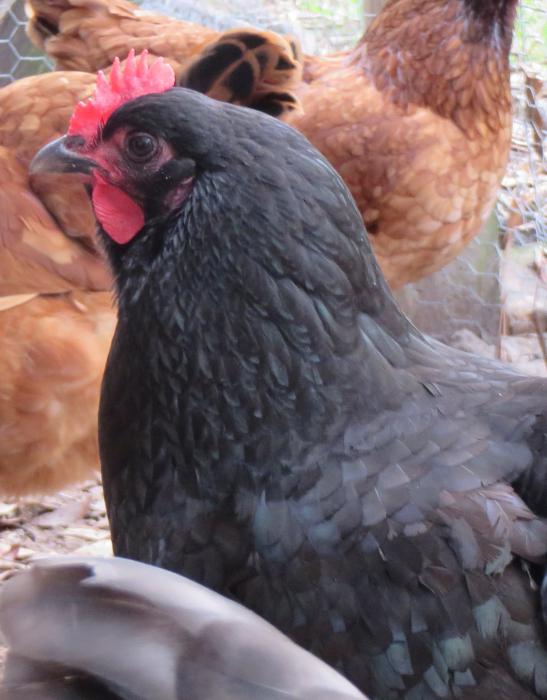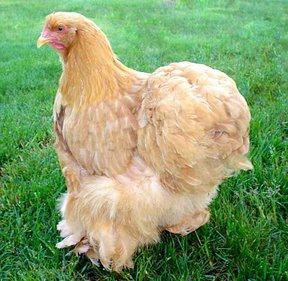Laying hens: breeding at home
Laying hens - the most popular at homefarmstead poultry. Breed it mainly to get a large number of eggs. The laying hen alone can carry them up to 200-300 pieces. in year. Undisputed advantage of these hens, in comparison with broilers, is unpretentiousness and resistance to diseases. But, of course, the breeding of laying hens at home is a procedure that requires compliance with certain technologies.
Where to begin?
Chickens are usually purchased at a poultry farm oroutput with the help of an incubator. Of course, breeding laying hens on eggs is impossible without a well-equipped shed. You can build this structure from any materials. However, when using concrete, additional insulation should be taken care of. Cold most breeds of layers is not afraid. But in a warm shed in winter, the bird will feel more comfortable. In addition, chickens are good only at temperatures not lower than 15 g.

Build a barn is usually away from the apartment building. The smell from the chicken coop, even if cleaned regularly, may not be very pleasant. Dimensions of the shed are chosen proceeding from the fact that for 10-20 hens there must be a minimum of 2х3 m of the area. Typically, the shed is erected with a frame-panel on concrete or wooden posts. Inside necessarily arrange at least one window. Otherwise, the chickens will be badly carried.
Arrangement of a barn
Of course, the breeding of laying hens in domesticconditions will be successful only if the house is appropriately equipped. First of all, you need to put food troughs in the shed. Their design should be such that the chickens can eat everything at once, without crushing. Usually the owners of household plots just shoot down two narrow boards at an angle and attach the legs at the bottom. From above on this feeder a pole is mounted, rotating around its axis. Without this element, the chickens will climb inside the resulting "trough" and scatter the feed. To sit on the perch and leave the litter in the manger they also will not work, as it rotates.
As drinkers in the henhouse, usuallyinstall just old pots or large cups. Of course, in the shed you need to arrange the roosts. It is most rational to place the poles in the form of a ladder, at a distance of about 35-40 cm from each other. The bottom roost should be at an altitude of about 80 cm. The nests can be placed on the floor, but it is best to still nail them to the wall, next to the roost. Their dimensions must be such that the chicken can fit freely inside. Note: nests and roosts can not be placed under the window. Skvoznyakov afraid even unpretentious layers.

If the floor in the barn is concrete, it must beshould be covered with straw or covered with sawdust with a layer of 10-20 cm. The same can be done with a wooden covering. But in this case it is not necessary. On the wooden floor, straw is usually stolen only for the winter.
Paddock
Unlike broilers, laying hens, breedingwhich - it's not too difficult, part of the day must necessarily be held in the fresh air. Therefore, next to the shed should be equipped with a paddock. Enclosure it usually grid-rabitsa. For one hen in the yard should be about 2 m2 area. Inside the fenced area, drinkers and feeders are installed. In addition, care should be taken to ensure that the chickens in the summer have the opportunity to hide in the shade.
The entrance to the paddock is made right in the wall of the barn below. Laz necessarily equipped with a door. Otherwise, unwanted animals, domestic or wild, can enter the chicken coop at night.

Care for chickens
Nesushki can be just an ideal choice forstarting a farmer. This bird is very unpretentious, but, of course, the breeding of laying hens on eggs - as a business or just "for yourself" - will be successful only if they are properly cared for.
First, as already mentioned, in the shed shouldbe light enough. Lamps must be hung here. At night, the light in the henhouse is switched off. Determine when it should be done is not difficult. The chickens sit on the roosts every time at the same time. You can hang in the shed an extra not too bright red lamp and leave it turned on for the night.
In the summer, climbing in the open-air cage should beopen. The bird decides how much time to spend in a barn, and how much on the street. Home-breeding of laying hens in the winter has its own characteristics. At this time, the bird is also allowed to walk, but not more than for a couple of hours and only if the outside is not too cold (not lower than -14 g.). As for feed, the number of root crops in the diet in the winter is slightly reduced, and grains, on the contrary, increase.
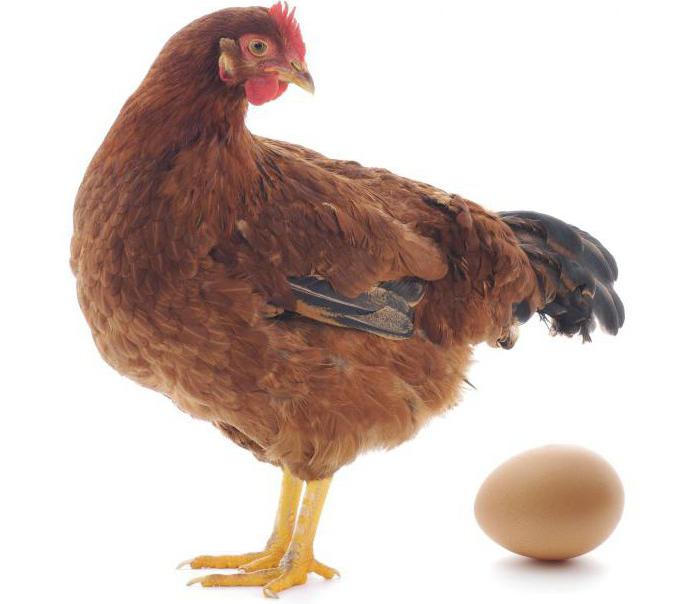
Eggs from the nests should be taken on time. Cleaning in the barn is carried out at least twice a year (but not in winter). It is also advisable to arrange simple ventilation. To do this, usually just make holes in the opposite walls (one above, the other below).
Features of feeding layers
The content of this bird is always a good homebusiness. The breeding of laying hens is not too expensive. Eat this bird is much smaller than broilers and in relation to forages unpretentious. And although these chickens are not grown for meat, they still need to get enough proteins. Nonswearers are necessarily fed wheat, mixed fodder, fish or meat-bone meal. It is also very useful to give yeast.

Of course, such chickens should be fedproducts containing a large amount of calcium. Otherwise, the egg shell will be very thin. This can be, for example, chalk or pounded shells. Sometimes they give a grated shell.
Root crops and grass are also important componentschicken ration. In the mashrooms, you can add carrots and beets, cabbage, potatoes, zucchini, etc. In the autumn, grind apples and pears. An excellent addition for mesoca are nettle, carrot and beet tops, quinoa. For better digestibility of food in the shed, a small container with small pebbles should be installed. Feeders and drinking bowls need to be washed at least once a week.
Dilution and maintenance of laying hens: feeding regime
Food for these chickens is usually given three times a day. In the morning they pour in protein foods. This can be, for example, wheat grain mixed with bran. In the lunch of chickens, feed the mashanka. In the trough it is applied in such a quantity that everything is completely eaten within half an hour. In the evening the bird is given a grain again. Feed the chickens always at the same time. Otherwise they will drop egg production.
Eating hens: breeding at home
Chickens from chickens of this variety getnot difficult. On one cockerel should have 5-10 hens. To get the chickens out, you just have to wait for some of the hen to sit on the eggs. It happens quite often. You can put new eggs under the chicken in the next five days.
If no laying hen wants to becomeyou will have to use an incubator. Eggs for the bookmark are also selected for five days. Of course, they must be whole and large. The incubator should be selected with the automatic rotation mode. Chickens are hatched in such aggregates on the 28-29 day after laying.
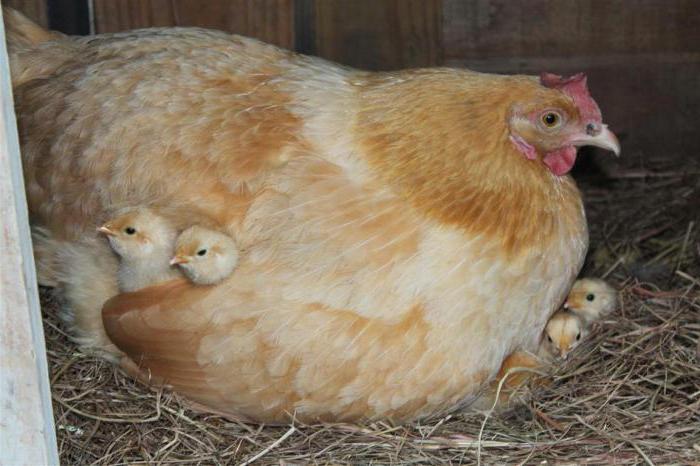
Care for chicks
The idea is, of course, not bad - breedinglaying hens as a business. Reviews of the poultry of this direction of productivity from farmers are good, which is due to the endurance of chickens. There is almost no occurrence between chicks. However, problems with this do not arise, of course, only if the young people are properly cared for. Hatched chicks are traditionally put in a box with a newspaper bottomed out with a newspaper. For heating, either a light bulb or a hot water bottle wrapped in a thick cloth is placed inside. The newspaper is subsequently changed periodically.
The ration of chickens at first must consist ofchopped eggs, cottage cheese and millet. You can buy and feed "Start" for layers. Also in the box it is necessary to put a drinker. It can be just a saucer with an inverted jar set on it. At first, a bit of potassium permanganate (to light pink color) should be added to the chicken water for disinfection of the stomach.
Air temperature in the box in the early days is notshould be below 30-32 grams. Then it is gradually reduced to 20-24 g. In the shed chickens can be translated at three weeks of age. At the same time, they usually start to let out on the paddock. But, of course, only if the street is warm enough.
Feed grown chicks grated carrots, cutnettle, bran, small crushed, foamed, etc. You can add and haulm. Be sure to give chalk or grated seashells. Finally, the adult ration of young layers can be translated at two months of age.
What you need to know about
Laying hens, breeding of which is not a proceduretoo troublesome, show high productivity usually only the first two years. Further, the number of demolished eggs is sharply reduced. At this time, the chickens are usually slaughtered, since keeping them further becomes impractical.
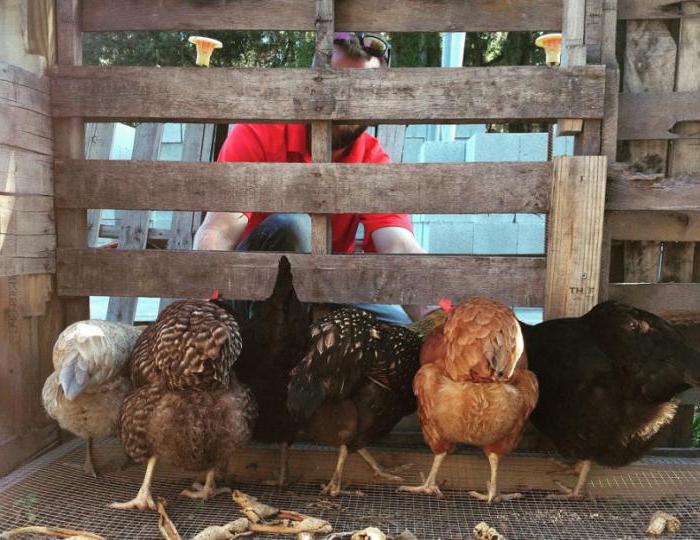
Layers of layers
Breeding laying hens on eggs as a business can become very successful. But, of course, only if the breed is selected correctly. The most popular in our country are laying hens:
Loman brown. These are very unpretentious chickens, capable of carrying 300-320 eggs a year.
The Kuchinskaya Jubilee. Domestic breed, characterized by excellent indicators of egg production.
Leggorn. This is also laying hens, the breeding of which on the farmstead can be quite profitable. Productivity of Leghorns reaches up to 300 eggs per year. However, in the second year, unfortunately, it is greatly reduced.
Also fairly common and promising breeds are Haysex Brown, Moscow black and Russian white.
</ p>

